Hey all! Real Farmer Jeff here.
One of the most important things I’ve noticed in gardening is that plants benefit from consistent feeding throughout the growing season.
Just like people feel better on a steady, balanced diet, plants tend to grow stronger, produce more, and bounce back from stress more easily when they’re regularly supported with nutrients. As plants grow, flower, and fruit, they naturally draw nutrients from the soil. Without replenishment, soil fertility can decline over time.
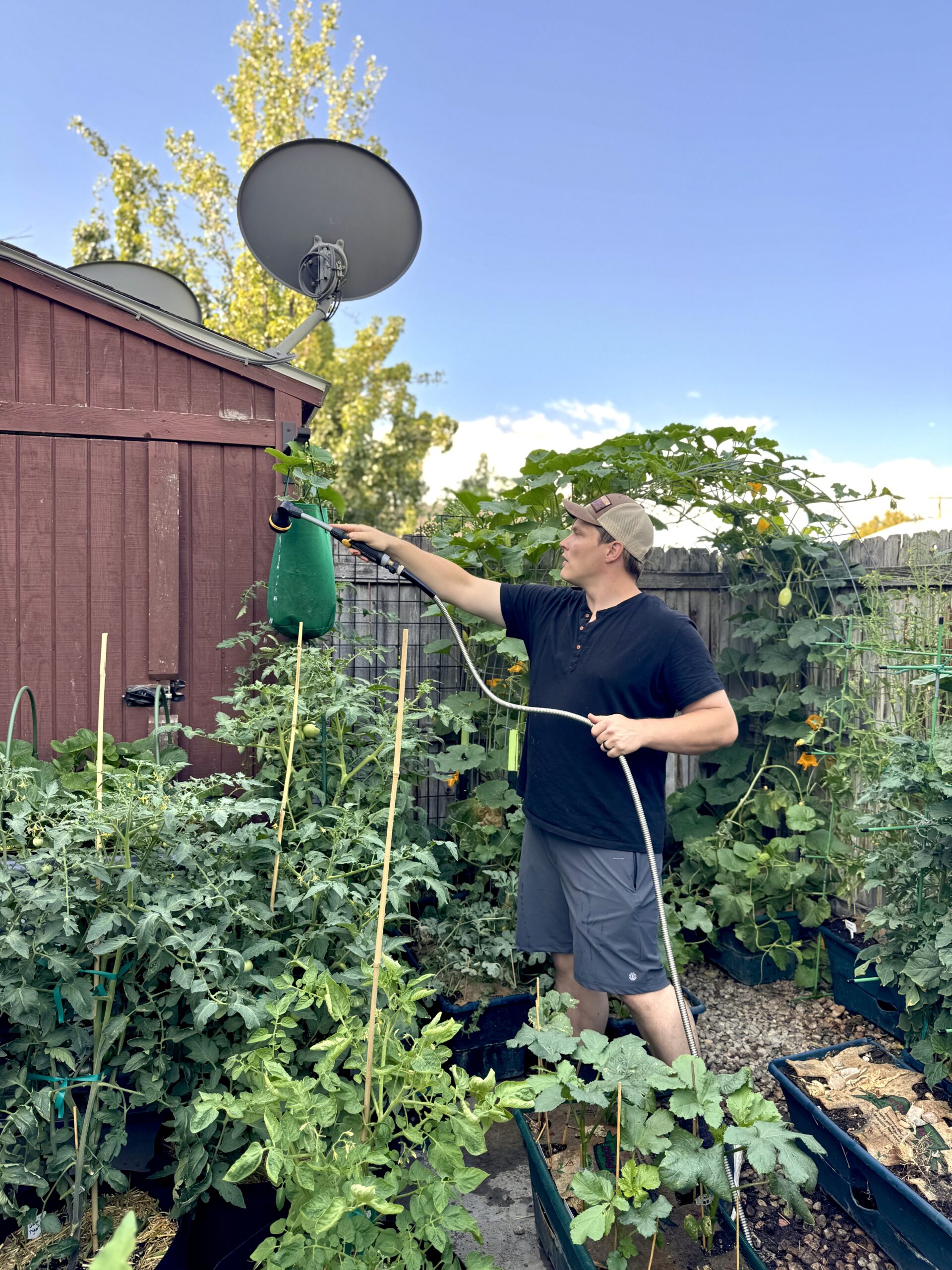
Fertilizing is one of the most impactful yet low-effort things you can do for your garden. It takes just minutes to apply but can dramatically improve plant growth, yield, and overall health – far outweighing the small time investment. In this blog post, I’ll explain why fertilizing is important, what it does, and what my fertilizing routine looks like.
Let’s get started!
Why Fertilize?
Regular fertilizing throughout the growing season can greatly improve your garden’s health and productivity. By supplying essential nutrients consistently, plants develop stronger roots, grow more vigorously, and produce more flowers and fruit.
This steady feeding also helps plants better resist pests, diseases, and environmental stresses. Additionally, it supports a healthy community of beneficial microbes and organisms that break down organic matter, cycle nutrients, and improve soil structure.
All of this enhances nutrient availability and soil fertility. The result is a resilient, thriving garden that delivers abundant, quality harvests season after season.
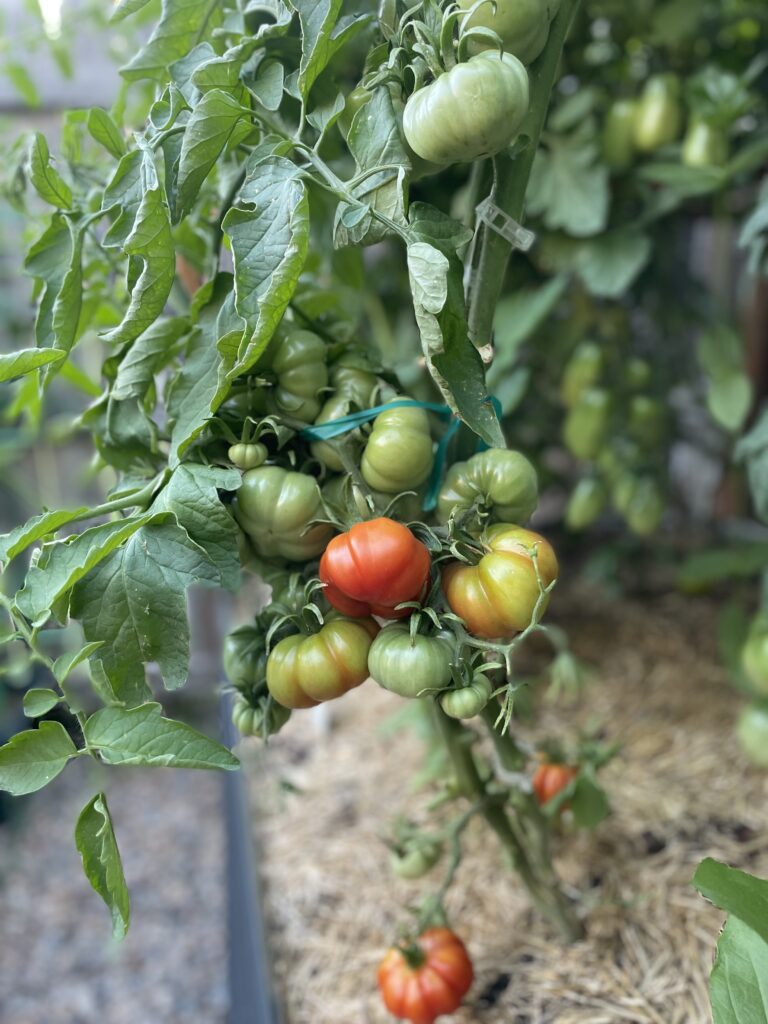
How Often to Fertilize
In a vegetable garden, providing nutrients on a consistent schedule can make a big difference in plant health and productivity. The exact timing depends on your soil, crops, and fertilizer type, but here are some general guidelines:
- Light feeders (like lettuce, spinach, and herbs) usually benefit from fertilizing every 3–4 weeks during the season.
- Heavy feeders (such as tomatoes, peppers, corn, and squash) tend to do better with fertilizing every 2–3 weeks.
- Organic fertilizers, which are slower to release nutrients, often work best when applied more frequently in smaller, regular doses.
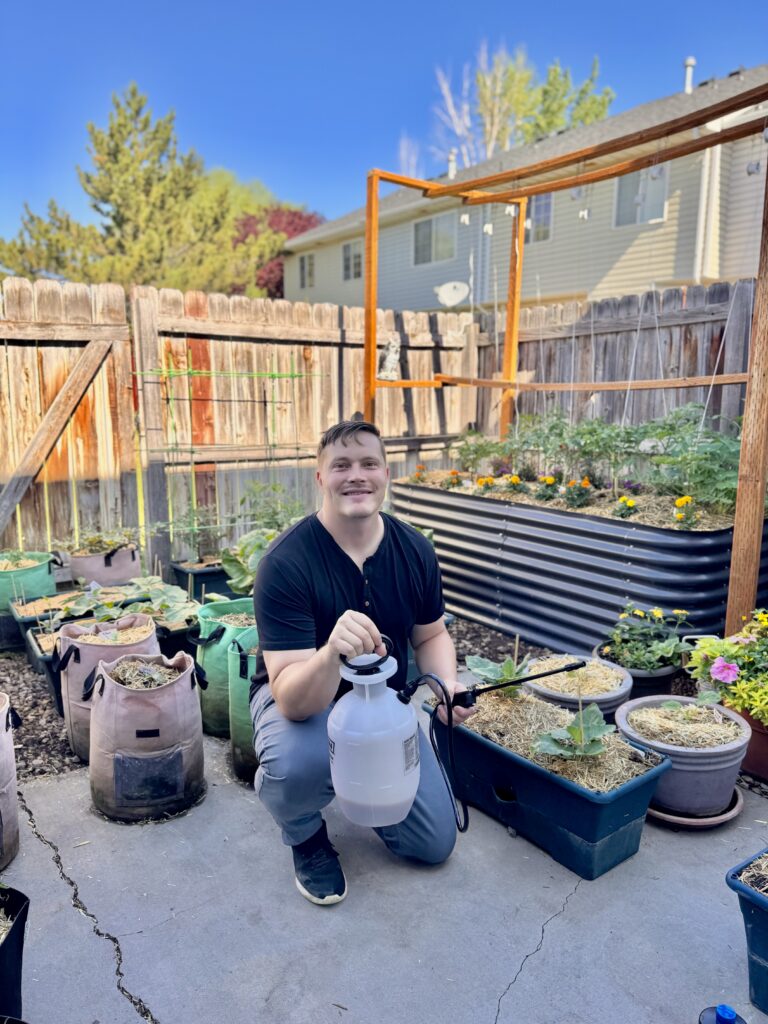
NPK Ratio Explained: How to Choose the Right Fertilizer
Different plants and stages of growth benefit from different nutrient balances. Leafy greens prefer higher nitrogen. Fruiting crops like tomatoes and peppers often benefit from more phosphorus and potassium once they start setting fruit. Understanding the NPK ratio helps you choose the right fertilizer for your goals.
All fertilizers list three numbers on the label, known as the NPK ratio. These stand for:
- N – Nitrogen: Promotes leafy green growth
- P – Phosphorus: Supports strong root systems and flower/fruit development
- K – Potassium: Helps with overall plant health, disease resistance, and stress tolerance
Personally, I keep things simple by applying a liquid mix to my garden every 2 to 3 weeks. It’s a routine that’s easy to follow, and it helps keep everything growing strong without overdoing it.
My mix includes:
- Beneficial Bacteria Concentrate: Supports soil life and improve nutrient availability
- Neptune’s Harvest Fish Fertilizer: An organic liquid fertilizer that provides a gentle, nutrient-rich feed
Organic fertilizers like fish fertilizer usually have lower NPK numbers than synthetic options. But that doesn’t mean they’re weaker – they just work differently.
Organic nutrients are more slowly released and more biologically available over time. For example, Neptune’s Harvest Fish Fertilizer typically has an NPK of 2-3-1 (the classic fish and seaweed variety), 2-4-2 (tomato and vegetable blend), or 2-6-4 (rose and flowering blend) – which gives a gentle, balanced feed that supports steady growth without the risk of over-fertilizing.
I usually use the classic fish and seaweed blend as plants are small, but I like to switch to blends with higher phosphorus and potassium levels as my plants begin to flower and fruit more.
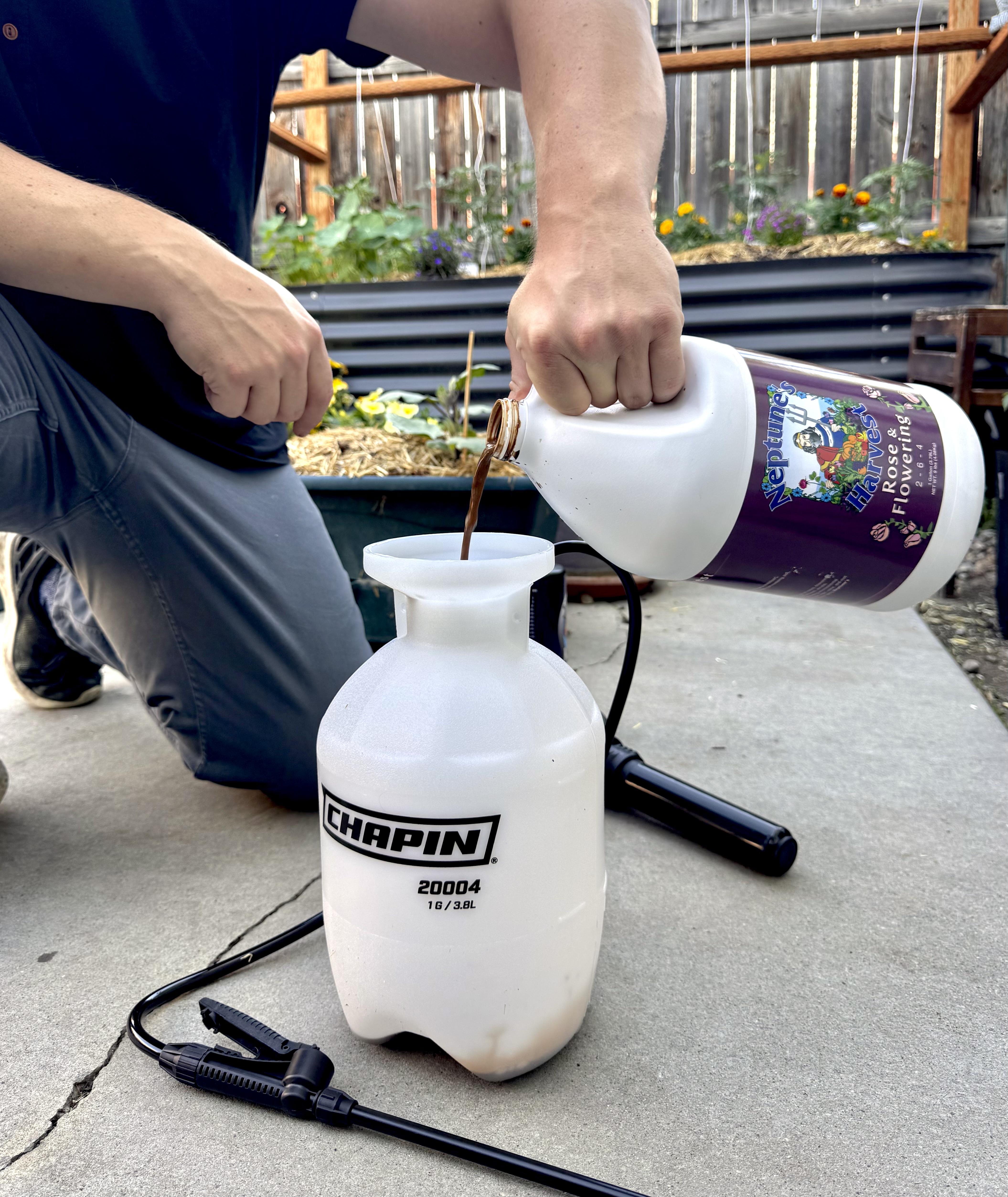
Why I Recommend Using Fish Fertilizer and Beneficial Bacteria
Fish Fertilizer:
Fish fertilizer is an organic liquid fertilizer made from fish byproducts, rich in natural nutrients, amino acids, and trace minerals.
Note, this is not sponsored. I like using Neptune’s Harvest because it’s a cold-processed fish hydrolysate, meaning its nutrients are in a form plants can absorb quickly – much faster than typical organic fertilizers that rely on microbial breakdown.
It’s gentle, effective, and easy to apply. Just dilute with water and feed your plants directly at the roots. This quick nutrient availability combined with organic benefits is why I use it season after season. Just watch out, fish concentrate smells potent lol. Not that any fertilizer likely smells good.
Beneficial Bacteria:
Beneficial bacteria is another key part of my fertilizing routine. These microbes help break down organic matter, cycle nutrients, suppress harmful pathogens, and support healthy soil ecosystems.
Like fertilizers, beneficial microbial products come in different forms:
- Pellets or granules that are applied to the soil and slowly release microbes over time
- Liquid concentrates that you mix with water and apply directly, providing a quicker microbial boost
Among these microbes, mycorrhizal fungi are especially valuable. They form partnerships with plant roots, extending their reach and helping plants absorb water and nutrients (particularly phosphorus) more efficiently. Other beneficial bacteria species improve nutrient cycling and root health.
Using a liquid beneficial bacteria concentrate alongside fish fertilizer helps keep complex community of living organisms in the soil active and supports ongoing nutrient availability for my plants.
How I Apply My Fertilizer Mix
- Fill a watering can or pressure pump sprayer with the recommended amount of Neptune’s Harvest fish fertilizer and beneficial bacteria concentrate.
- Add water.
- Mix well and apply the solution directly to the soil at the base of plants.
I avoid spraying leaves because wet foliage can promote fungal diseases, especially on sensitive plants like tomatoes. Since most nutrient uptake happens through roots, applying directly to the soil is safer and usually more effective.
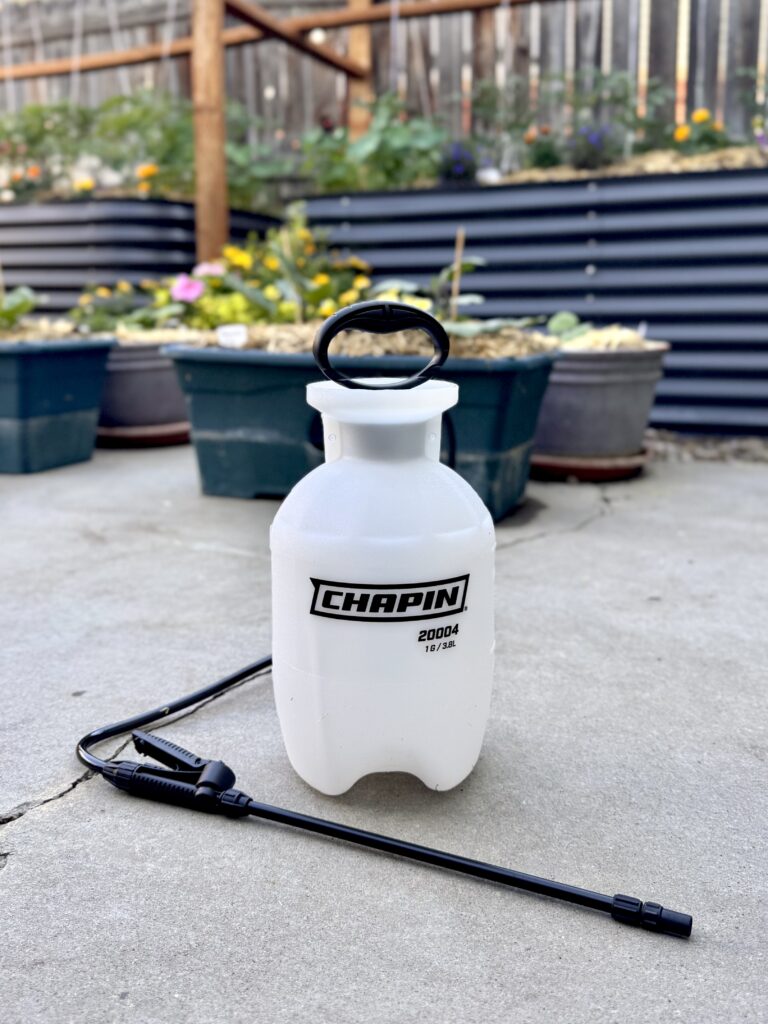
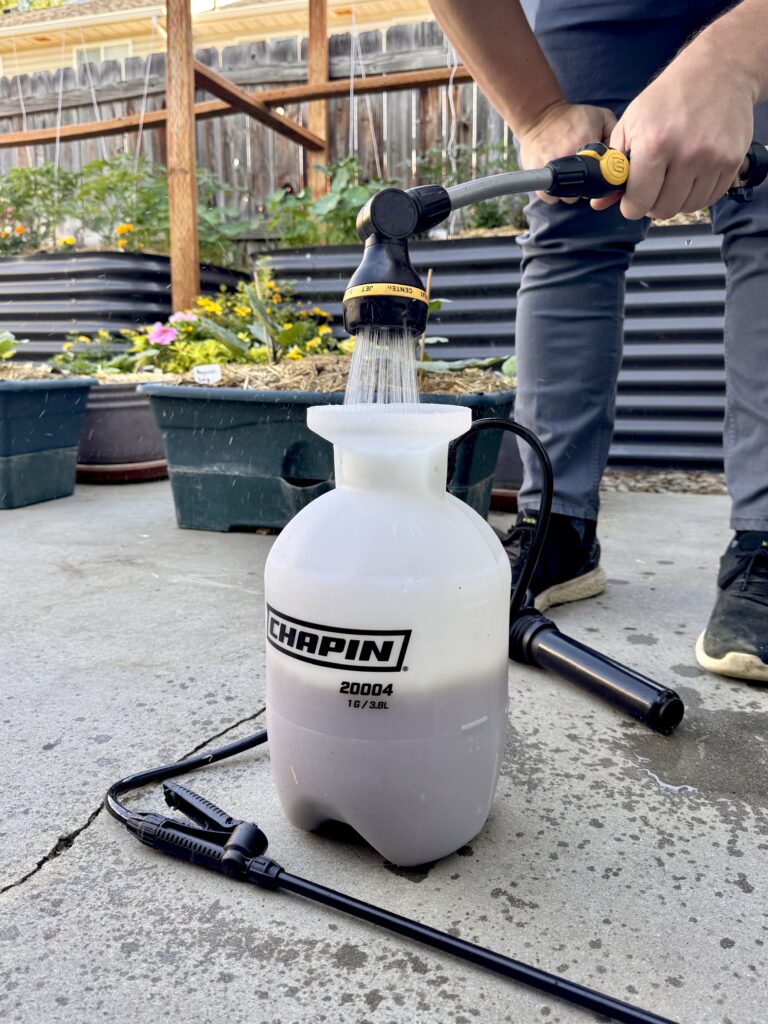
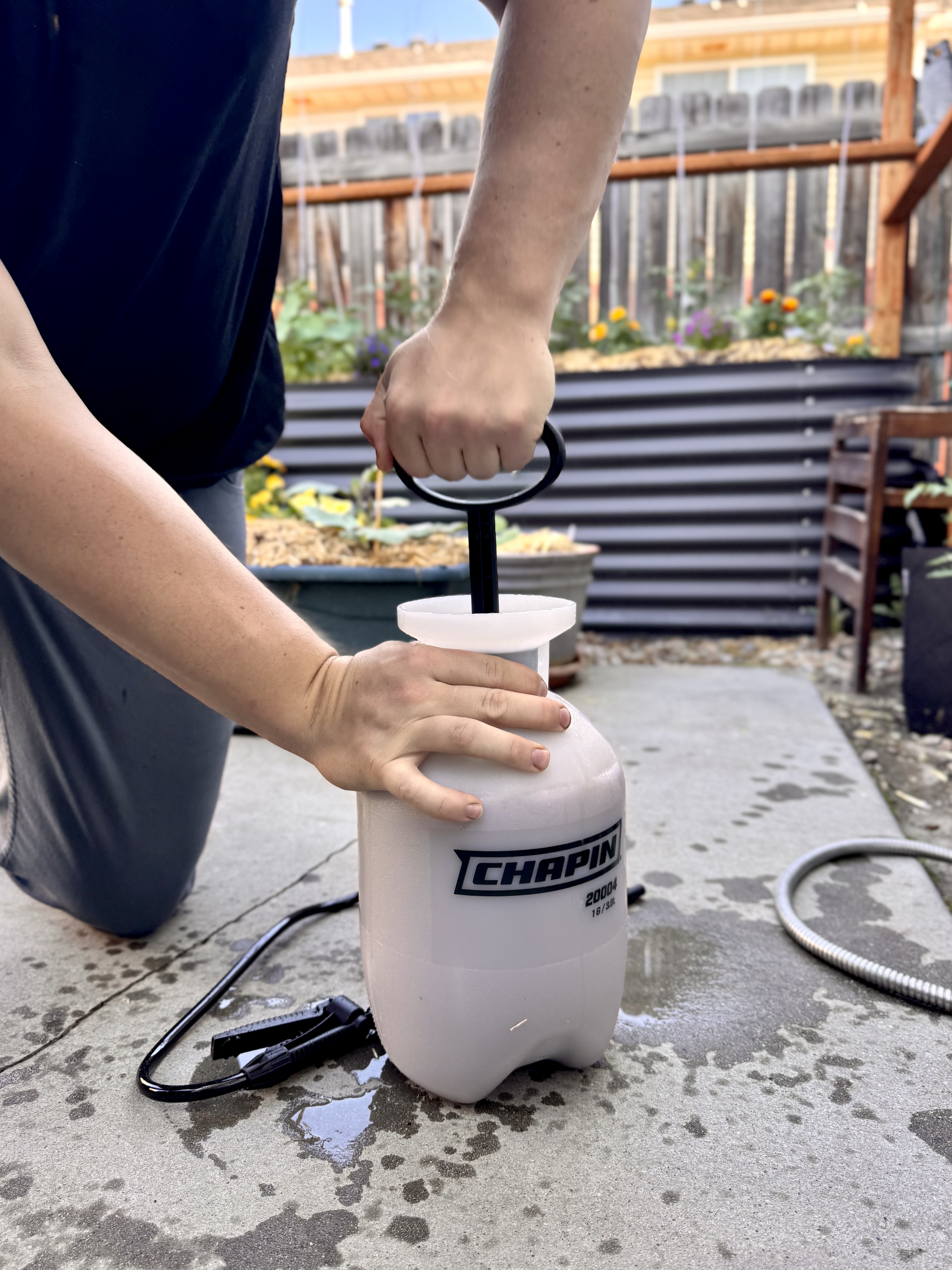
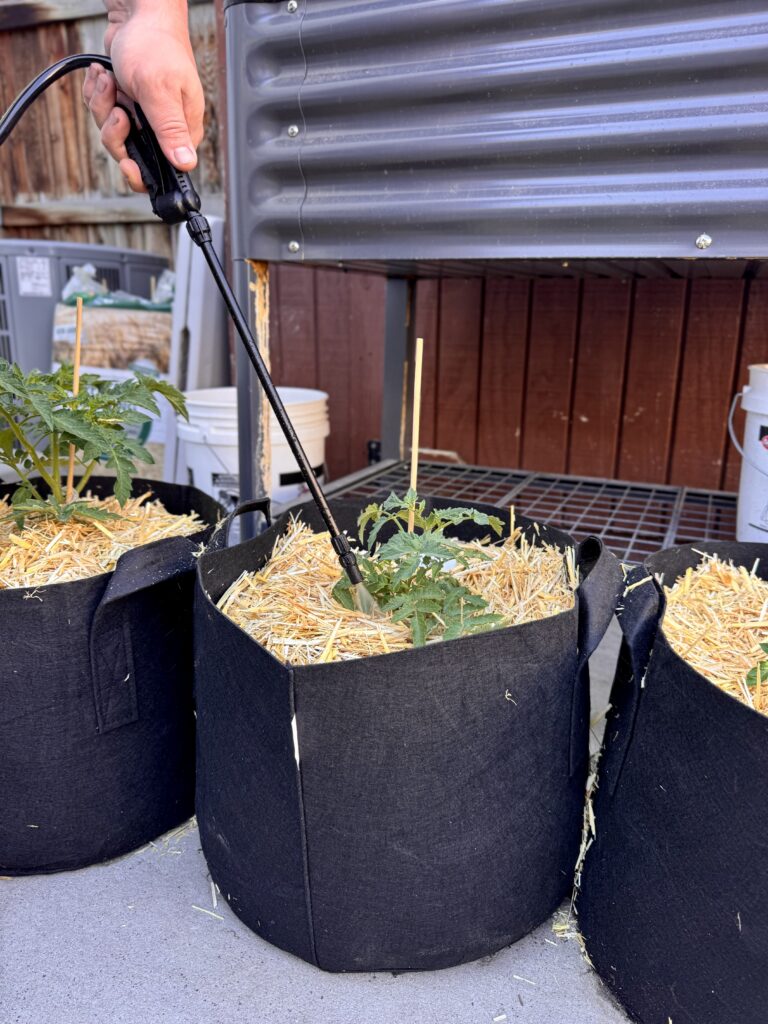
Thanks for reading along, guys! If you enjoyed this blog post, check out my other gardening blog posts:
- How to Start a Garden on a Budget for Under $100
- Essential and Nice-to-Have Garden Products for Your Perfect Setup
- My Garden Setup: 3 Best Garden Containers for Every Gardener
- Understanding Garden Light and Shade: A Simple Guide
- How to Build a Homemade Trellis Using Cattle Panel
Follow me on social media for daily content and instructional videos about gardening!
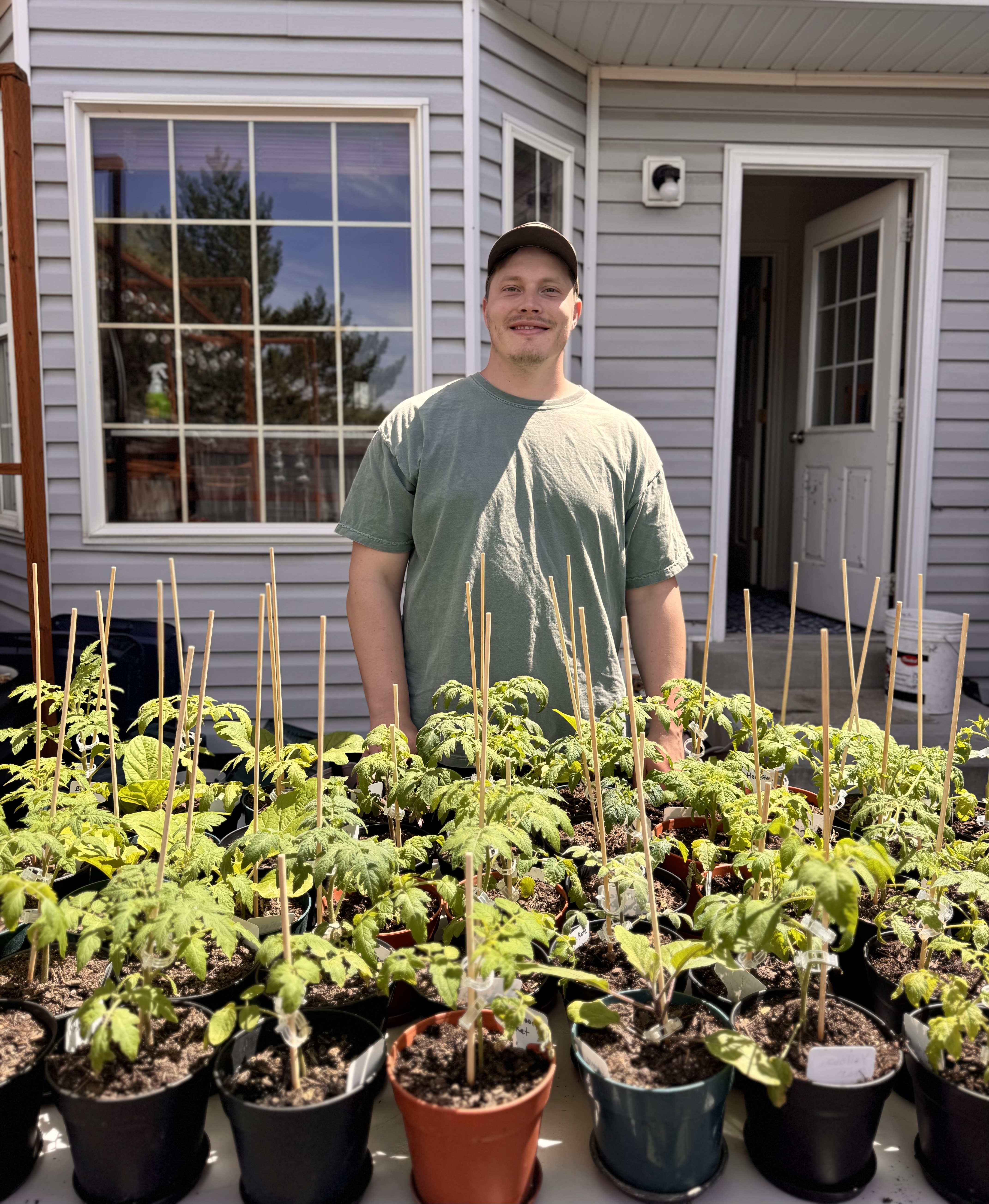

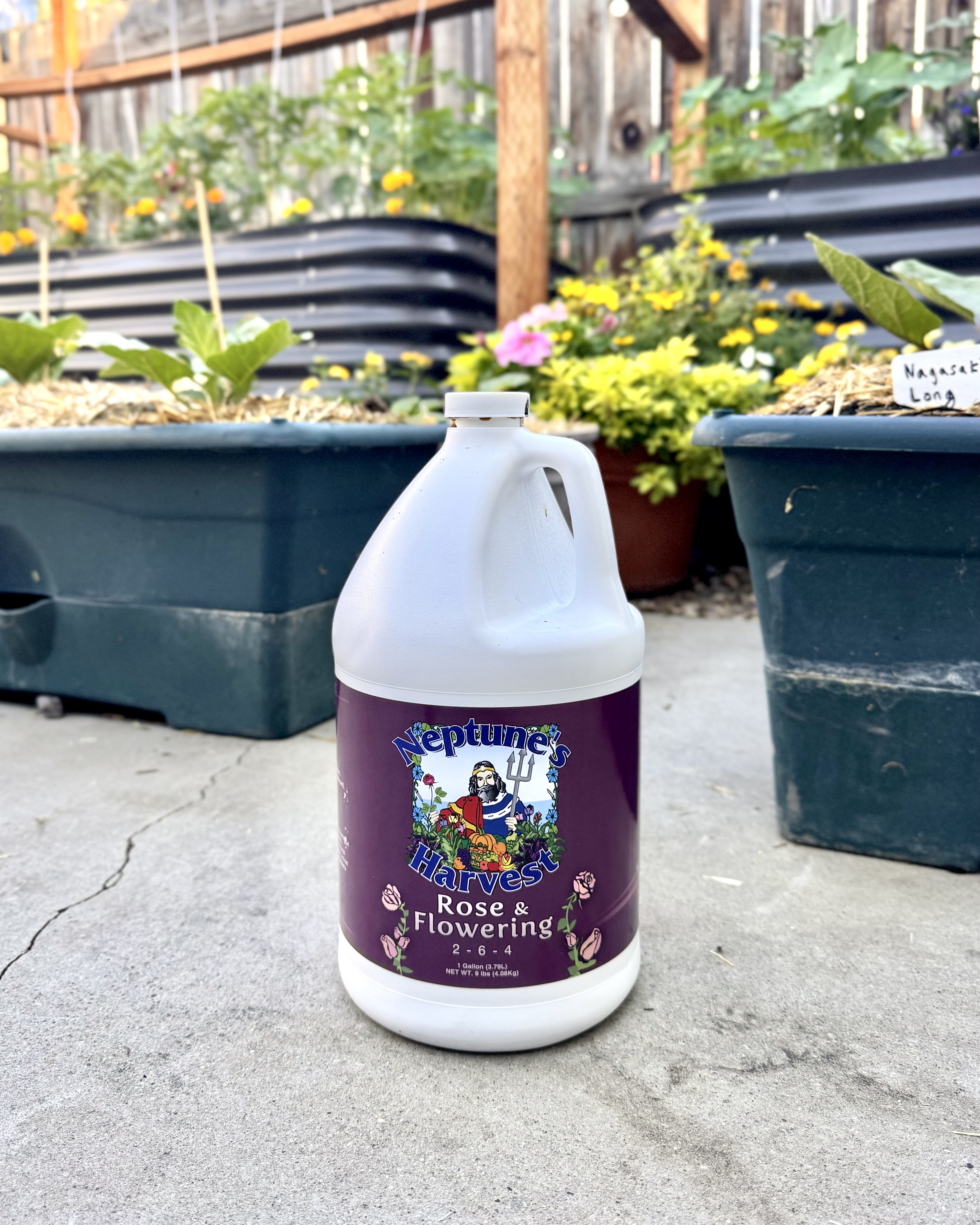
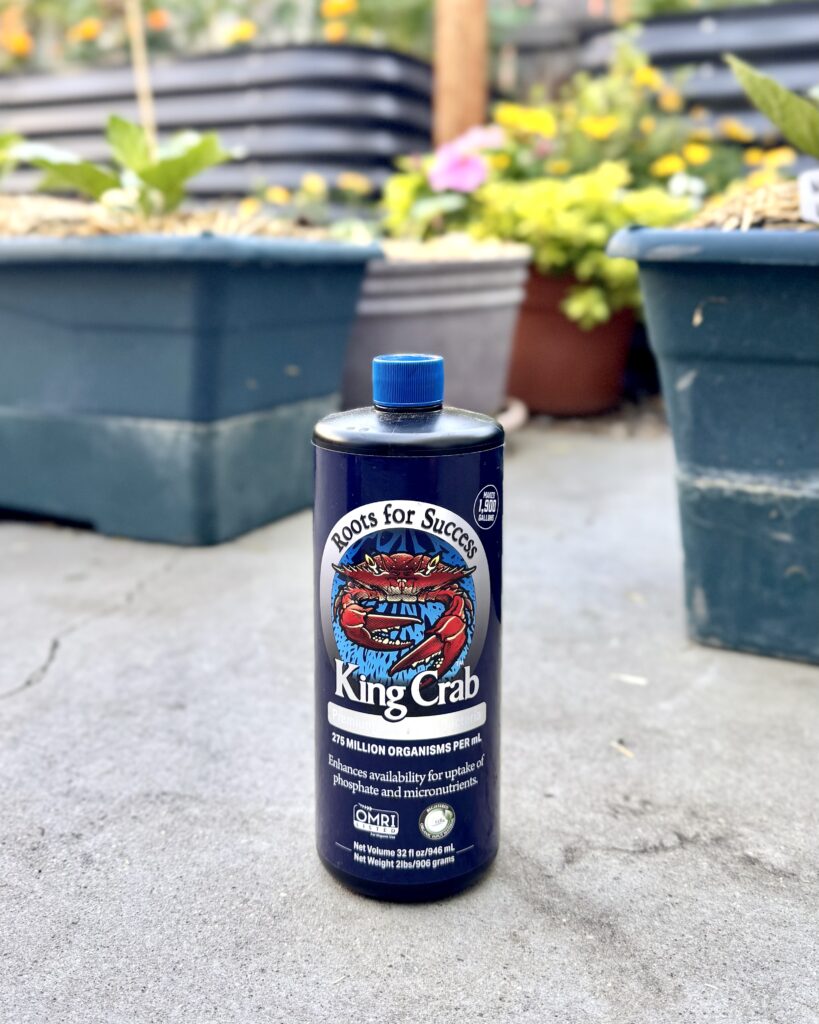



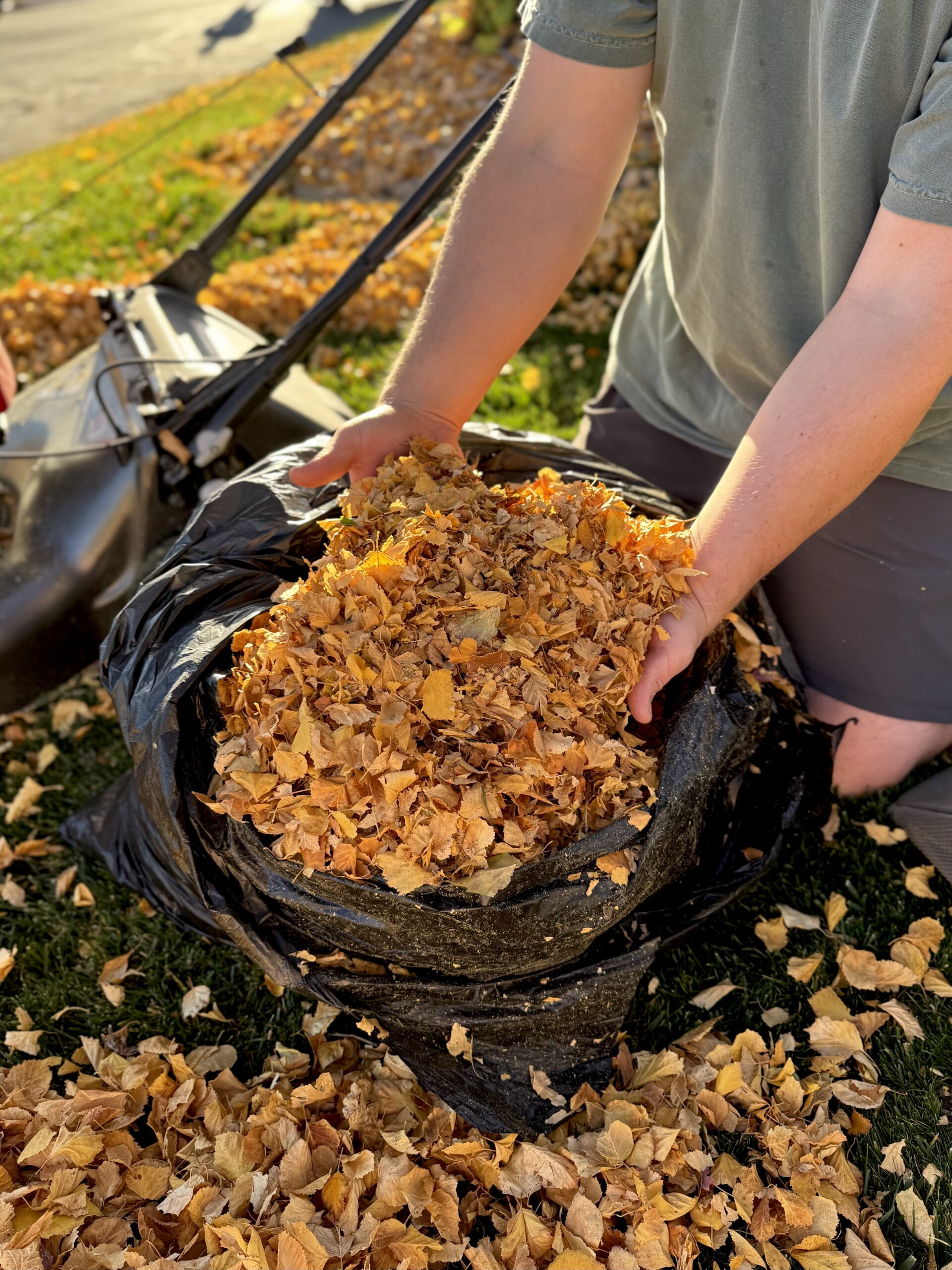
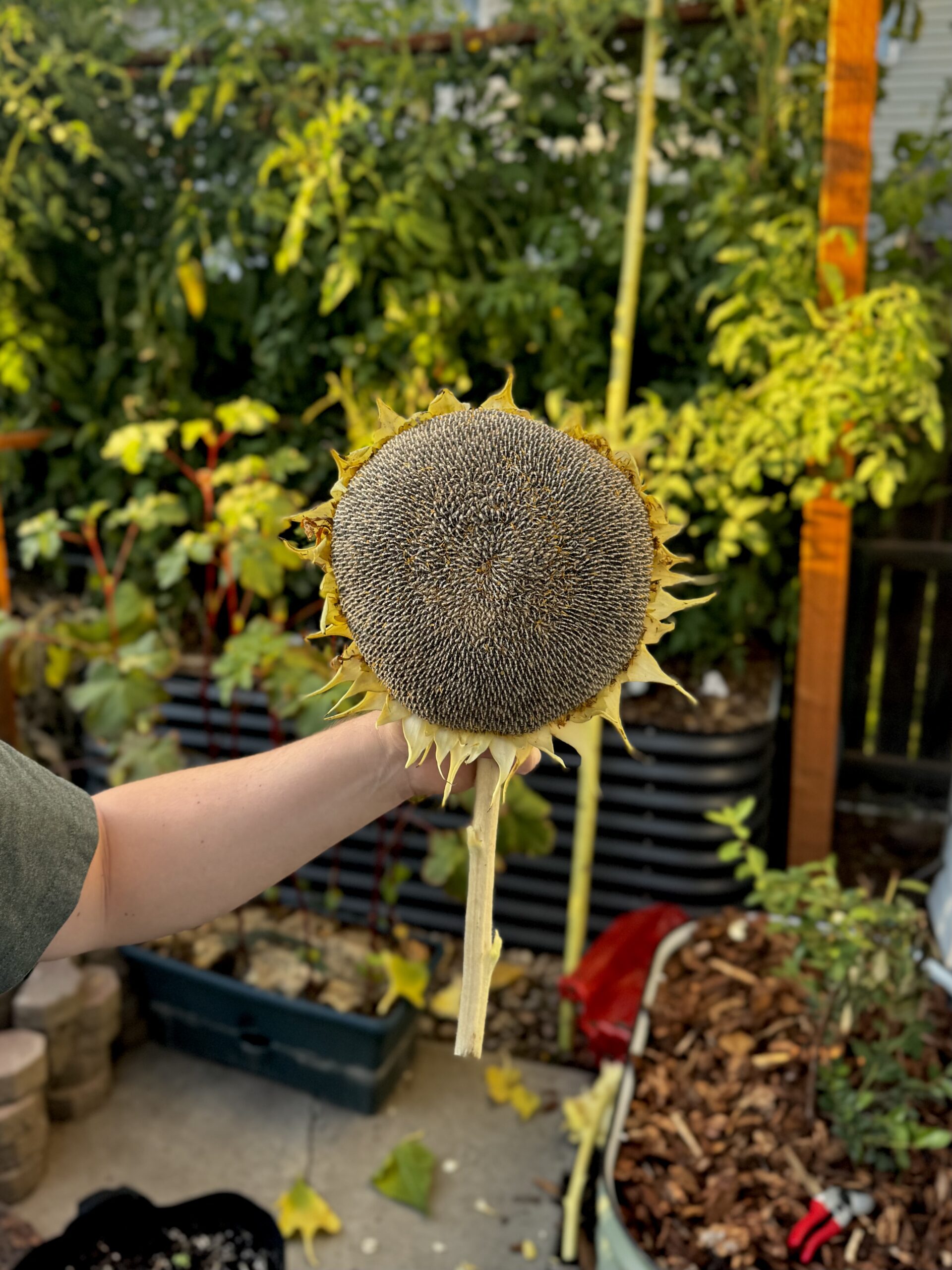
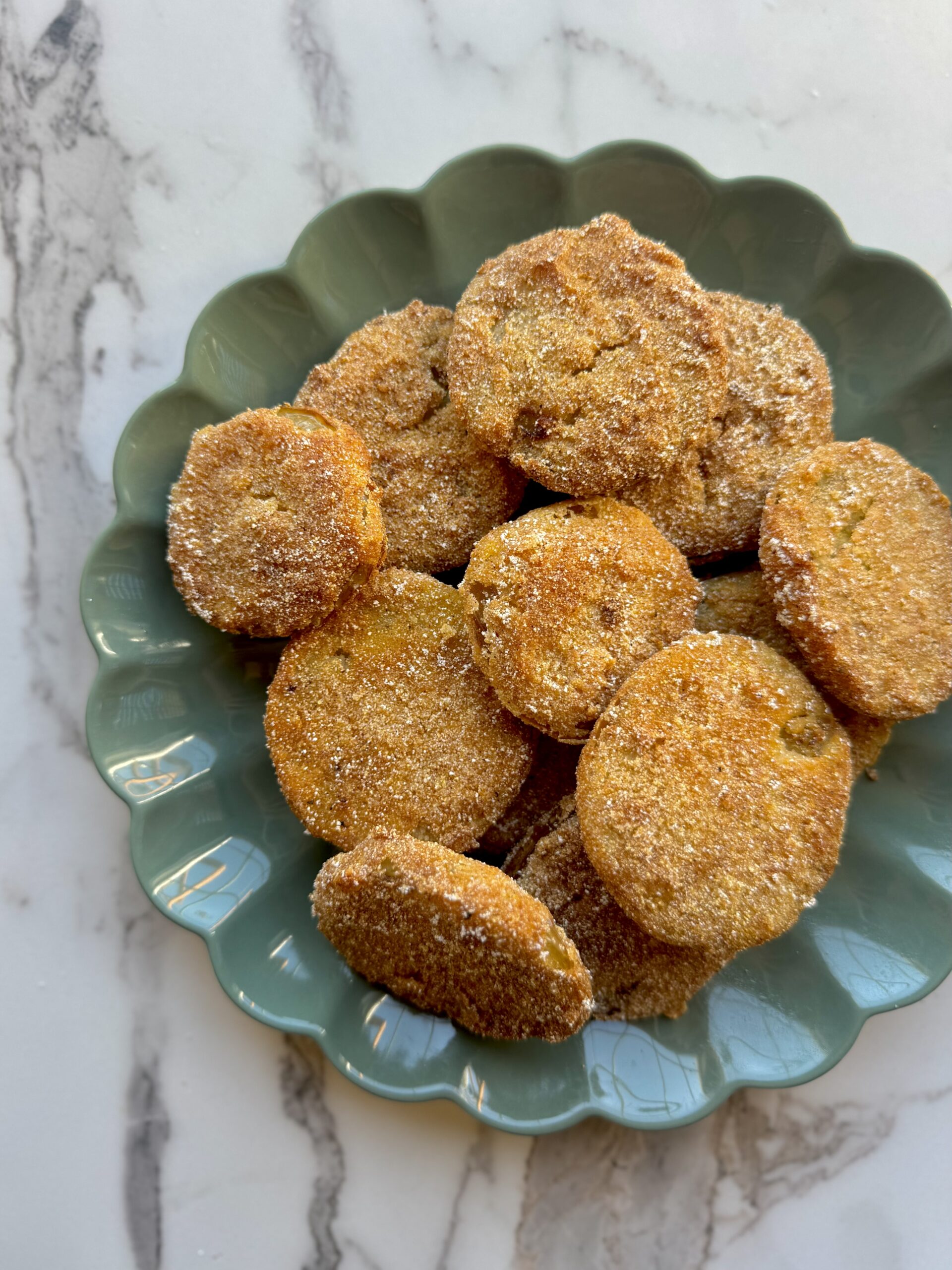
Definitely will be trying out Neptune’s harvest. I have also heard good things. I agree pump sprayers are super nice.
Balanced explanation without pushing specific brands too much. Any other recs on the beneficial bacteria?